The signs, symptoms, and effects of ADHD can look different for each person impacted. Learning about attention-deficit/hyperactivity disorder is one of the first steps toward healing.
Understanding ADHD
Learn about attention-deficit/hyperactivity disorder
Attention-deficit/hyperactivity disorder (ADHD) is a neurodevelopmental disorder that is characterized by a persistent pattern of inattention and impulsivity. ADHD and other neurodevelopmental disorders usually begin to manifest during early childhood, and ADHD is commonly discussed in terms of children and adolescents, but adults can also be afflicted with this condition.
According to the Diagnostic and Statistical Manual of Mental Disorders, fifth edition (DSM-5), the criteria for an adult to be diagnosed with ADHD include experiencing at least five of the symptoms in the inattention and/or the hyperactivity and impulsivity categories below for at least six months, with these symptoms occurring persistently and being severe enough to negatively impact one’s social, academic, and/or occupational activities:
Inattention
- Failing to pay attention details and/or making careless mistakes
- Having difficulty sustaining attention in tasks or leisure activities
- Appearing not to listen when spoken to directly
- Failing to follow through on tasks, instructions, or other responsibilities
- Having difficulty staying organized
- Avoiding or being reluctant to engage in activities that require sustained mental effort
- Losing paperwork, mobile phones, and other necessary items
- Being easily distracted by unrelated thoughts and other non-relevant stimuli
- Forgetting to complete daily responsibilities such as paying bills, maintaining appointments, or returning calls or emails
Hyperactivity and impulsivity
- Fidgeting or squirming when sitting still is required
- Leaving one’s seat when remaining seated is required (such as in a class or meeting)
- Feeling restless
- Being incapable of quietly engaging in leisure activities
- Being constantly “on the go” or otherwise difficult to keep up with
- Talking excessively
- Interrupting questions, completing others sentences, and/or being incapable of waiting to take one’s turn in conversation
- Having difficulty waiting in line
- Interrupting or intruding on conversations or activities, taking over projects, or using the property of others without asking or receiving permission
Certain medications have proved to be effective at helping to control the symptoms associated with attention-deficit/hyperactivity disorder, especially when incorporated into a comprehensive treatment plan that also features a variety of therapeutic activities that deal with the ADHD, identify the presence of any co-occurring disorders, and address the negative impact that these issues may have already inflicted on the afflicted individual’s life.
Statistics
ADHD statistics
Experts have estimated that about 5 percent of adolescents and about 2.5 percent of adults meet the criteria for a diagnosis of ADHD. About 62% of adults with ADHD are male, and about 38% of adults with ADHD are female. According to the Anxiety and Depression Association of America (ADAA), it is estimated that less than one of every five adults with ADHD has been diagnosed or received treatment for this condition.
Causes and Risk Factors
Causes and risk factors for ADHD
The following are among the variety of genetic and environmental factors that are believed to influence the development of attention-deficit/hyperactivity disorder:
Genetic: Having a first-degree biological relative, such as a parent or sibling, who has ADHD increases the likelihood that an individual will also develop this disorder. Researchers have identified certain genes that appear to be associated with ADHD, but no direct cause-effect relationship has been established.
Environmental: Having an extremely low birthrate increases a person’s likelihood of developing ADHD by as much as 300%. Being exposed to alcohol in utero also increases a person’s risk for ADHD, as does being abused, neglected, or exposed to lead during childhood. Experts believe that nutritional deficiencies and exposure to certain other environmental toxins may put a person at increased risk for ADHD, but a definitive cause-effect relationship has yet to be established.
Risk Factors:
- Being male
- Having a low birth rate
- Experiencing abuse or neglect during childhood
- Poor nutrition
- Multiple foster placements during childhood
- Having a visual or hearing impairment
- Having epilepsy
- Elevated novelty speaking
- Negative emotionality
- Reduced behavioral inhibition
Signs and Symptoms
Signs and symptoms of ADHD
The following are among the common signs and symptoms that may indicate the presence of ADHD:
Behavioral symptoms:
- Repetitively drumming fingers, fidgeting, and squirming
- Avoiding tasks that require sustained focus or other mental effort
- Being disorganized and/or often losing necessary items
- Talking excessively, interrupting others, and/or barging into conversations
- Failing to complete projects or tasks
- Difficulties waiting one’s turn in line
- Acting impulsively without consideration of potential dangers
- Excessive multi-tasking
Cognitive symptoms:
- Forgetfulness
- Impaired ability to concentrate or focus
- Heightened distractibility
- Problems following conversations
Psychosocial symptoms:
- Irritability and angry outbursts
- Mood swings
- Low tolerance for stress or frustrations
Effects
Effects of ADHD
Untreated ADHD can inflict considerable damage on an individual’s life, with the following being among the common potential negative outcomes:
- Academic failure
- Diminished performance at work
- Job loss
- Financial distress
- Substance abuse
- Damaged or destroyed peer relationships
- Family discord
- Social ostracization
- Legal problems, including incarceration
- Traffic accidents and other types of accidental injury
Co-Occurring Disorders
ADHD and co-occurring disorders
Individuals who have attention-deficit/hyperactivity disorder have an increased likelihood of also experiencing the following co-occurring disorders:
- Oppositional defiant disorder (ODD)
- Obsessive-compulsive disorder (OCD)
- Autism spectrum disorder
- Tic disorders
- Anxiety disorders
- Major depressive disorder
- Specific learning disorder
- Antisocial personality disorder





